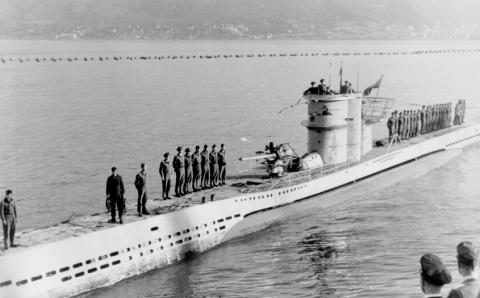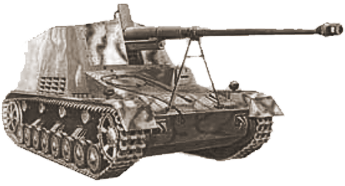Operation Paukenschlag

Following Hitler's December 1941 declaration of war upon the United States German Admiral Karl Doenitz sought to take advantage of the weakly guarded sea-lanes near the American coast and pick off the highly vulnerable, solitary, merchant ships plying these waters. Hitler approved Doenitz's plan, code named Operation Paukenschlag, or drumbeat/roll the drums. Doenitz' U-boats would carry Hitler's war to America and if successful deliver the first blows designed to cripple American shipping and industry. By December 1941 Doenitz' U-boat fleet numbered 91 boats, but 23 patrolled on station in the Mediterranean and 39 of the 55 other U-boats refitted in dockyards with only five operating in the North Atlantic. And with six more U-boats en route to the Mediterranean, eleven in transit to and from the North Atlantic, four on patrol in the Arctic Circle that left only six remaining U-boats available for Paukenschlag. That said when early in January 1942 Germany's half dozen U-boats surfaced off American shores, in spite of their limited numbers, they achieved remarkable success.
Of course, the American attitude toward war also made life a lot easier for enterprising U-boat captains. U-boats often discovered American merchant ships cruising along the coast past cities not yet blacked out, illuminated the unfortunate merchant ships and providing easy targets for the U-boats. A stunning number of merchant captains exacerbated their own danger by running with lights blazing, making it hardly necessary to single out the incompetence displayed on land. Furthermore, the US Navy failed to timely organize the merchantmen into convoys while also neglecting to provide anti-submarine warfare (ASW) protection for the merchantmen from either the Navy or the United States Army Air Force (USAAF). The United States Navy and Coast Guard assembled only twenty "ships", mostly Coast Guard cutters, patrol cutters and gunboats; completely outclassed in speed and armament by a typical German U-boat - to defend the entire 1,500 mile United States Eastern Seaboard. As for air assets, the US Navy deployed a mere 103 operational aircraft to patrol the east coast from Massachusetts to North Carolina. Only one airplane was a bomber, and not one Navy airplane could conduct the long range patrols needed to deter submarines from working in coastal waters.
Disastrous results ensued. The few U-boats in Paukenschlag's initial sortie made up for inadequate numbers with an aggressive determination out of all proportion to the effort expended. The U-boats arrived off the US coast at different times, often separated by hundreds of miles, but this did nothing to deter their captains from attacking almost immediately upon arrival off the US east coast. German U-boats with just over one hundred torpedoes and a couple hundred men initiated a two plus month long slaughter of American merchant shipping. The initial sortie of U-boats heralding the onset of Paukenschlag sank 87 ships totaling over half a million tons and German U-boats would spend a significant part of 1942 operating almost at will off the US eastern seaboard.
by Steven Douglas Mercatante



Post new comment